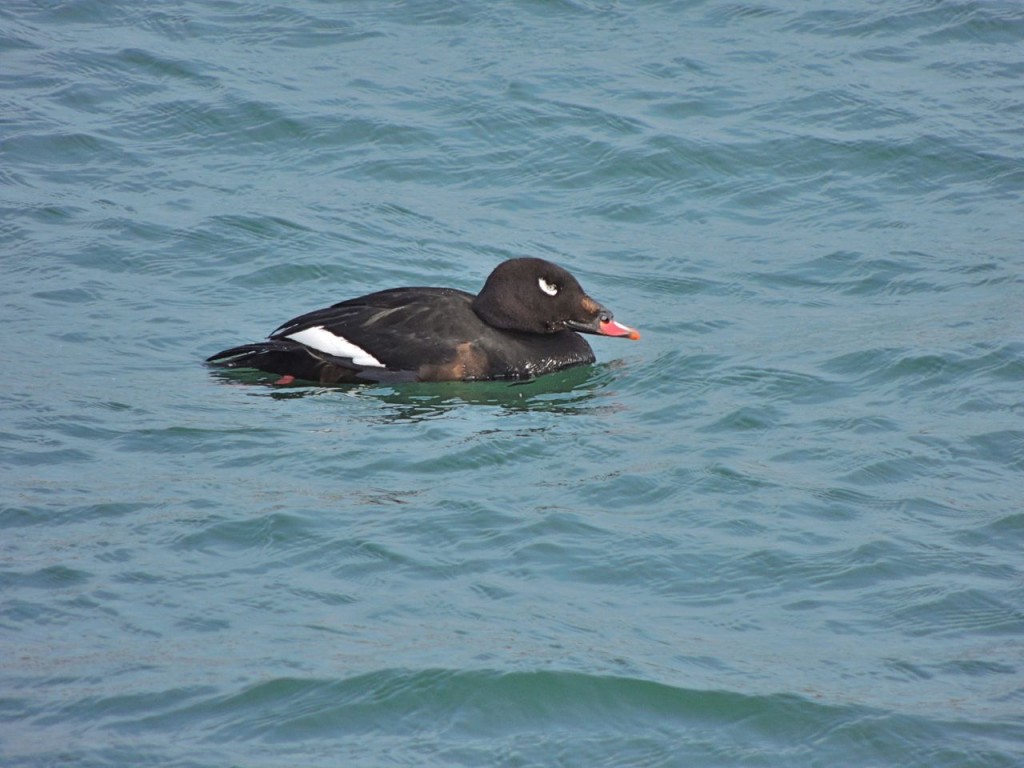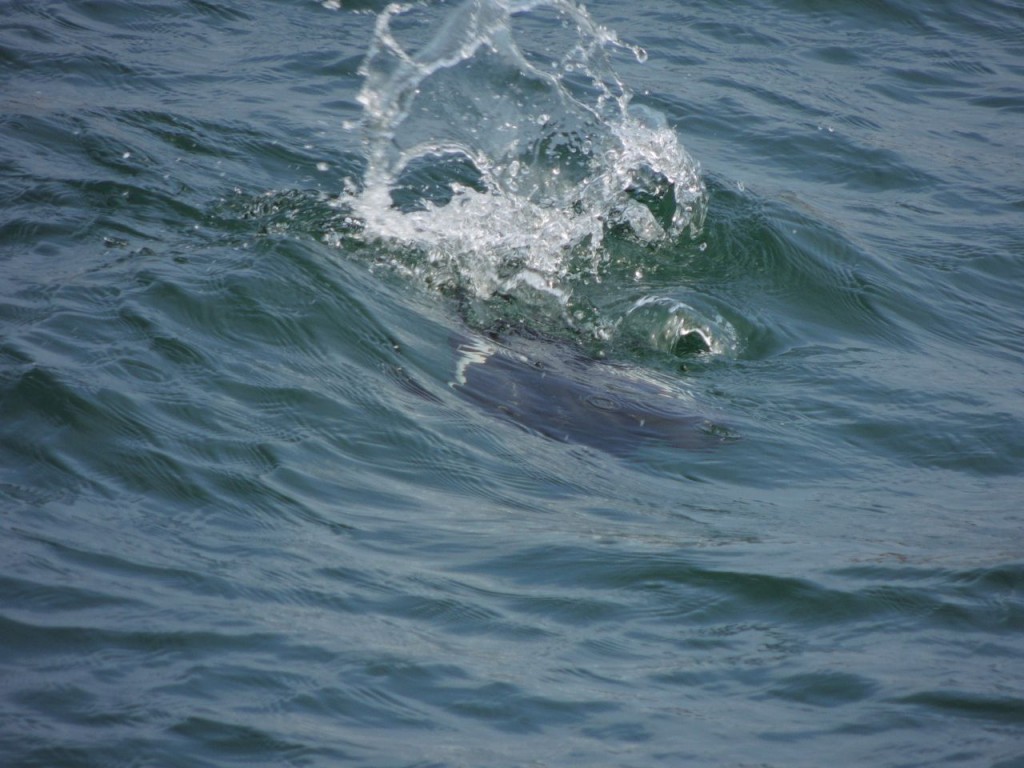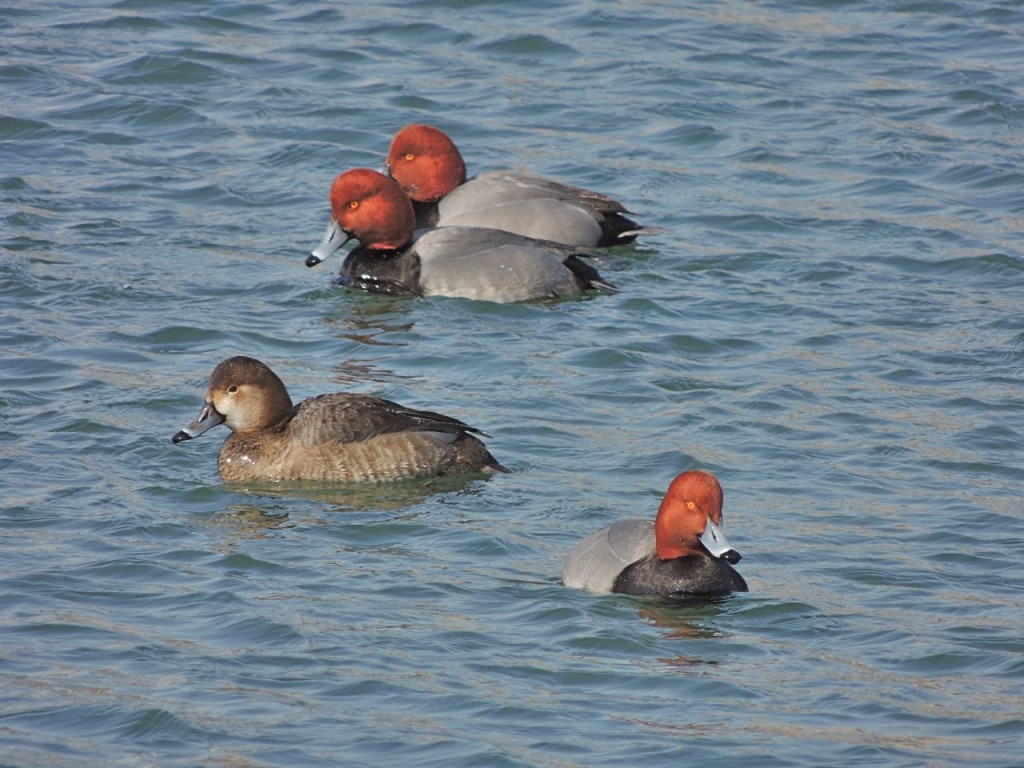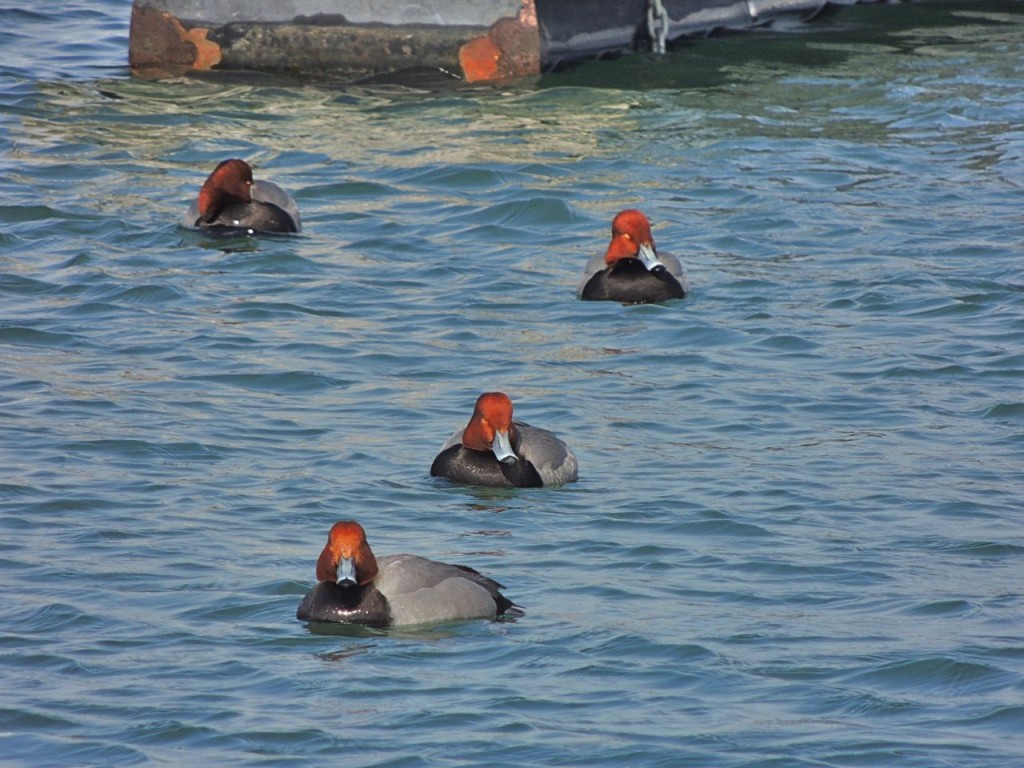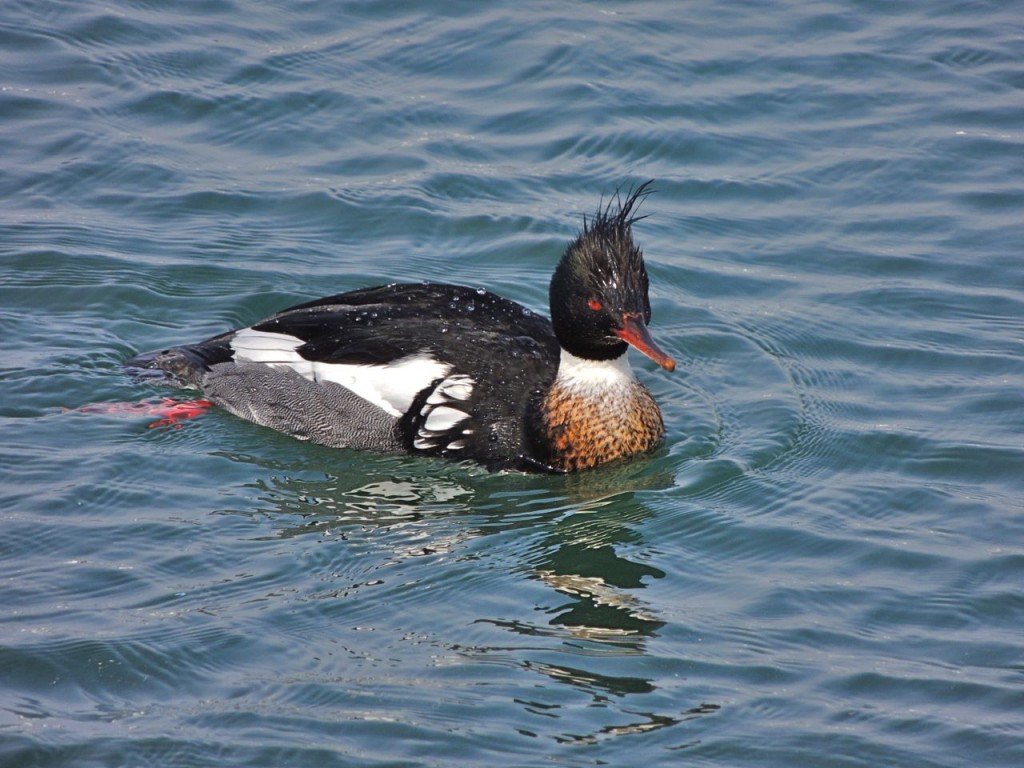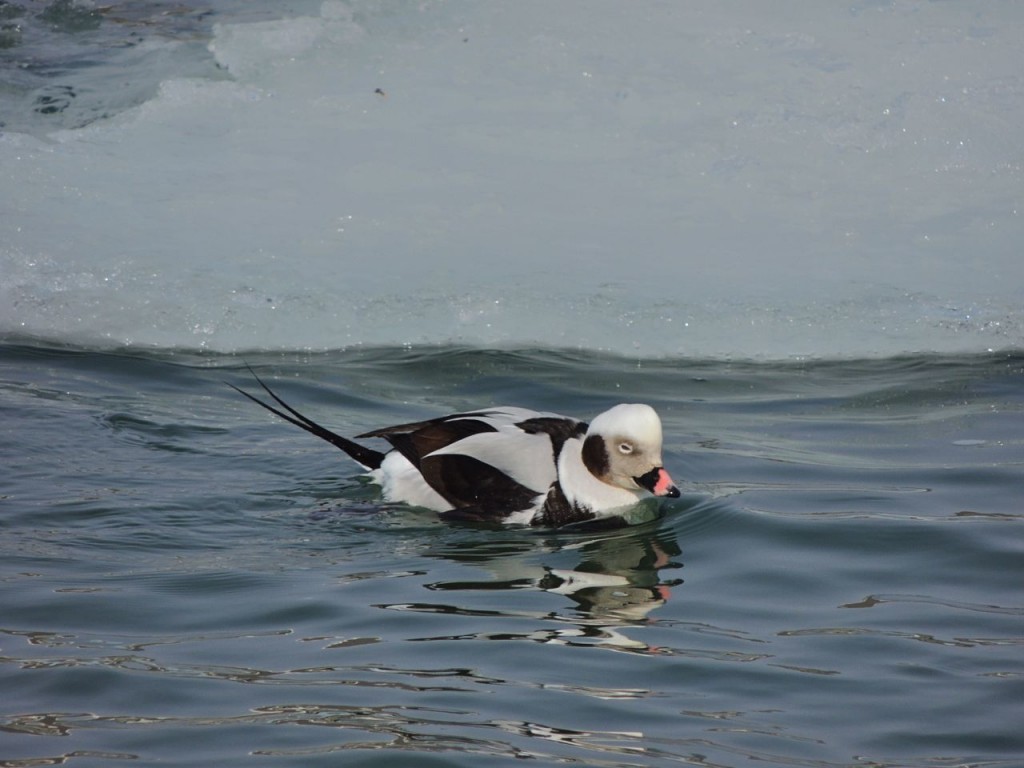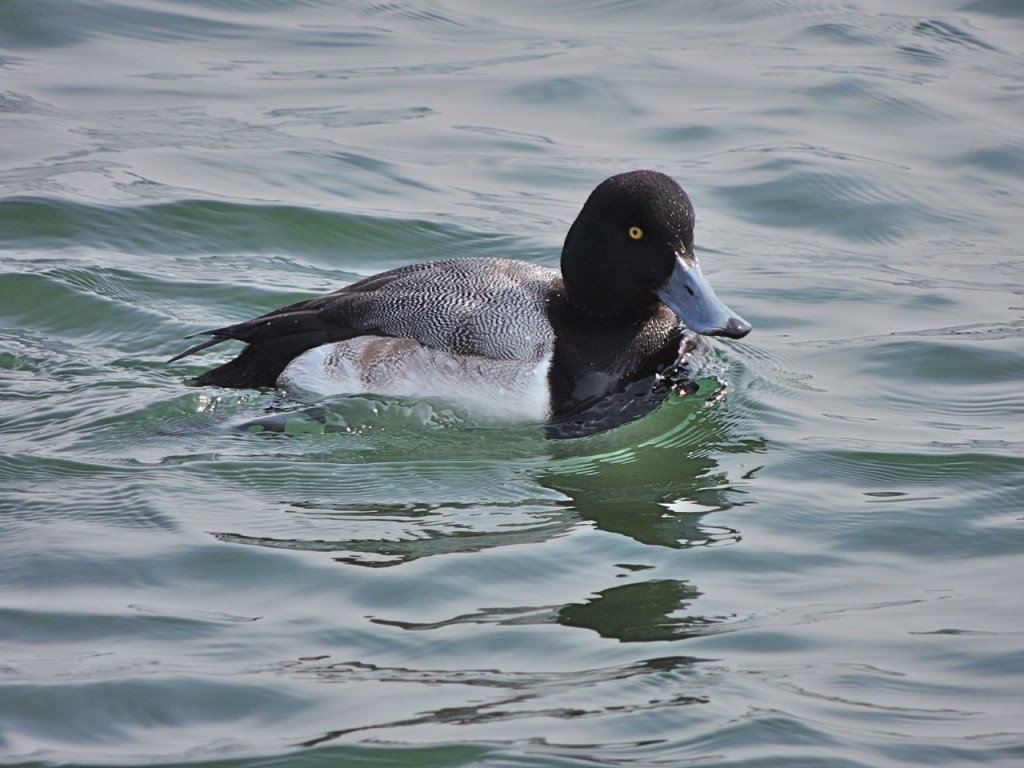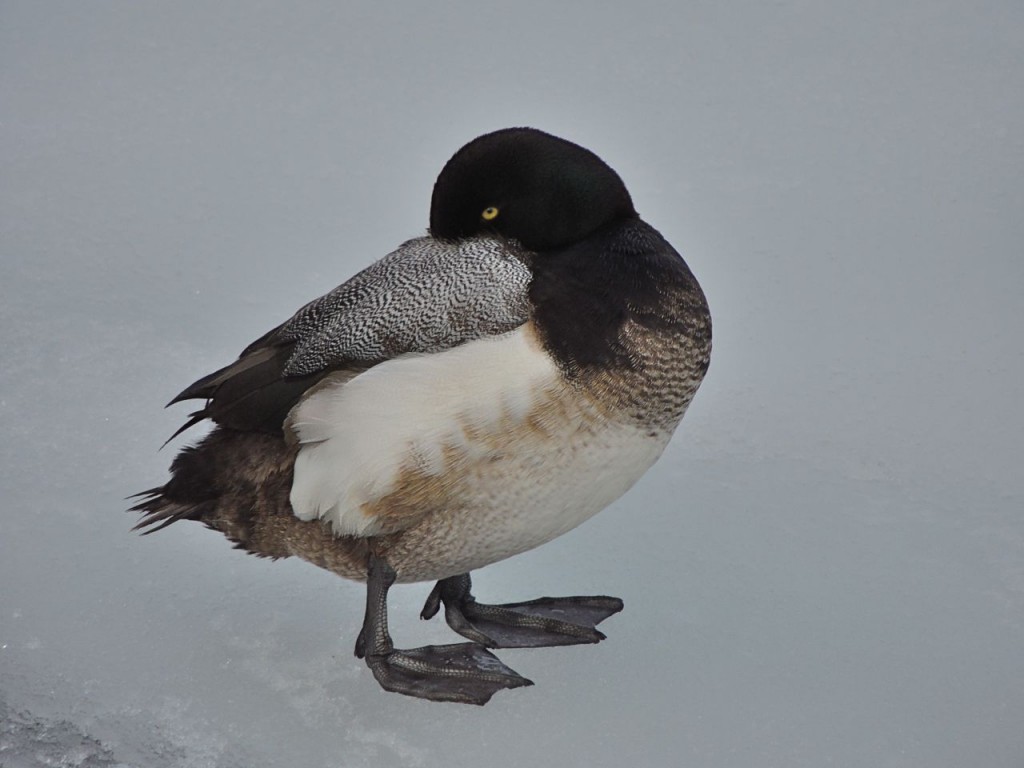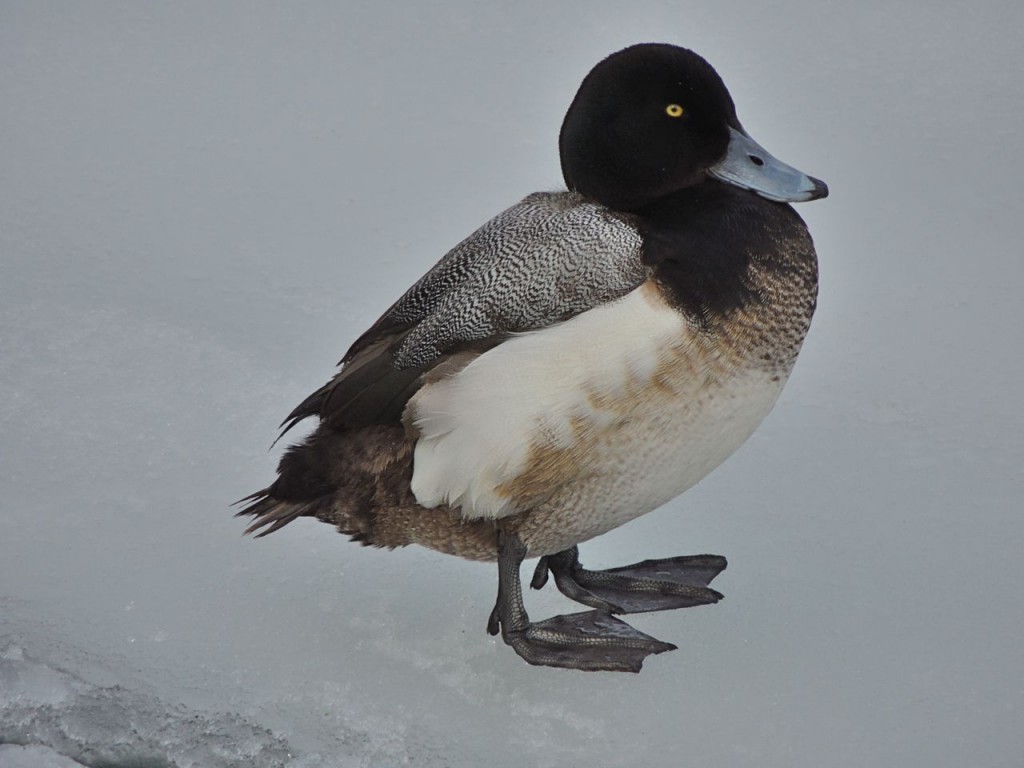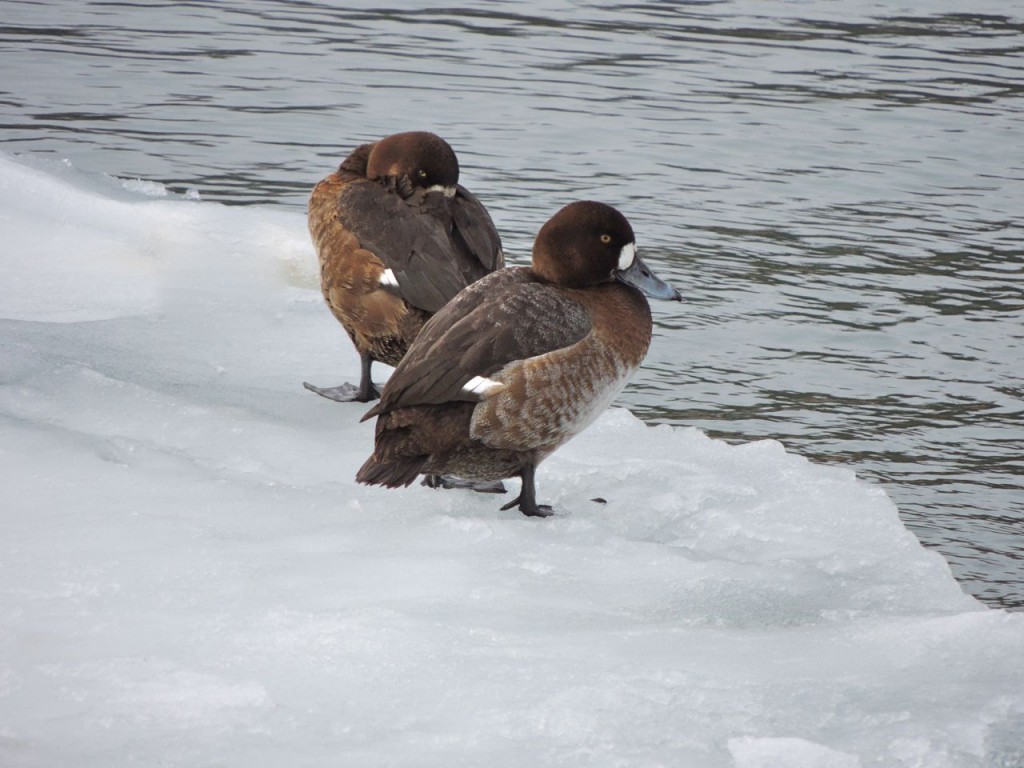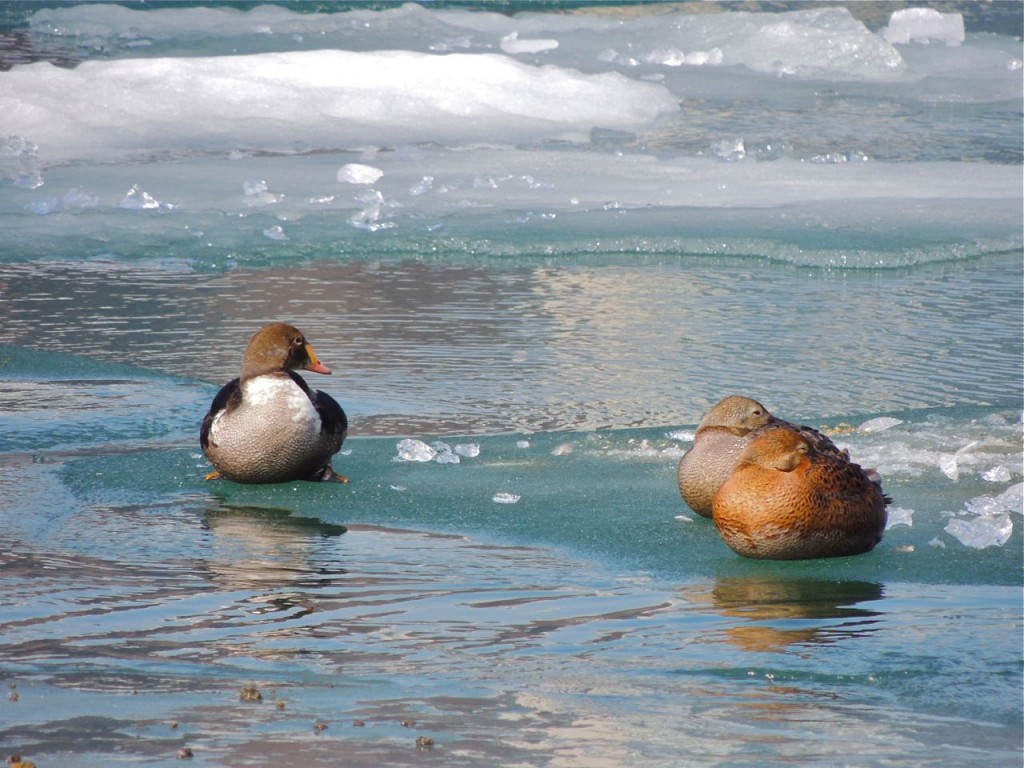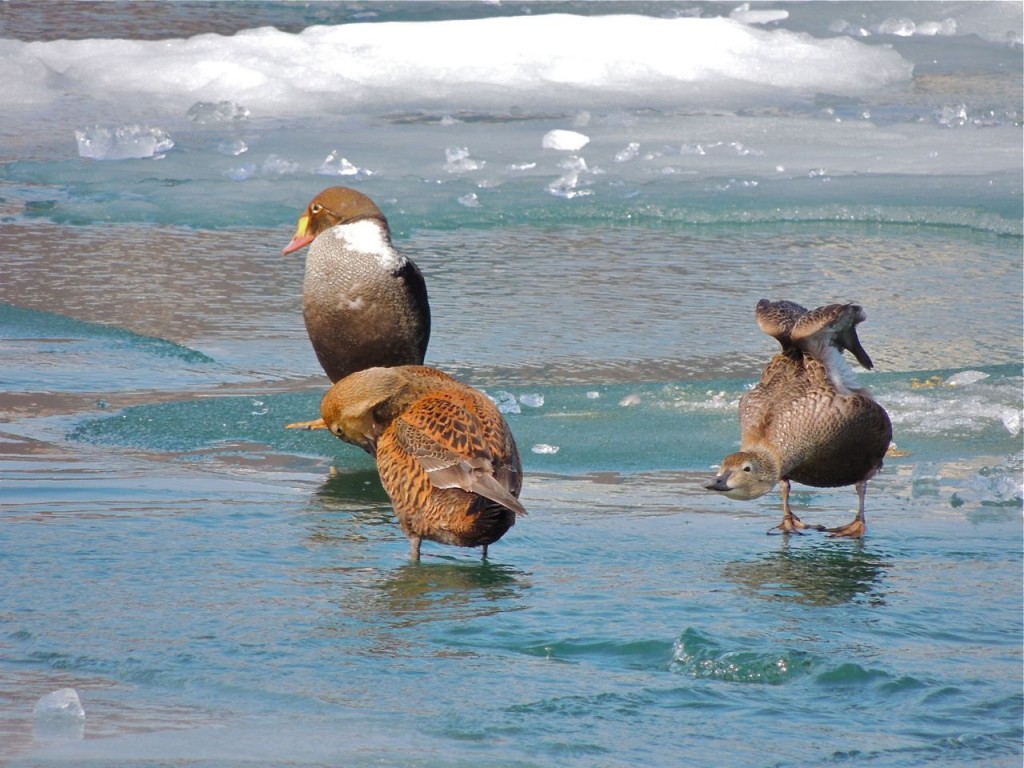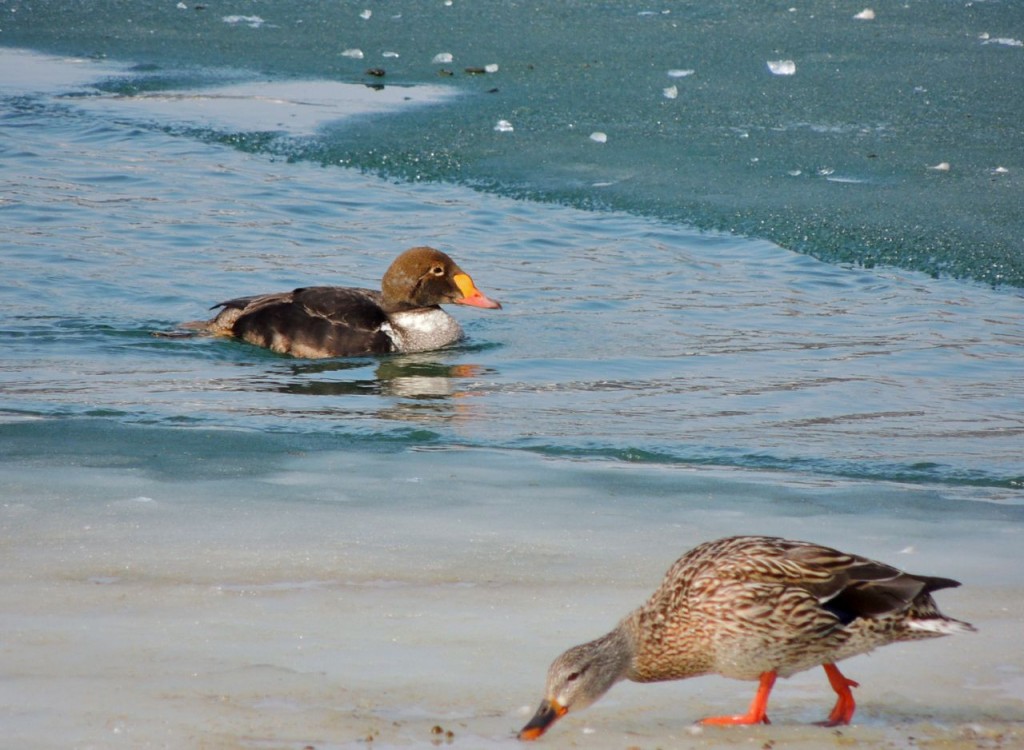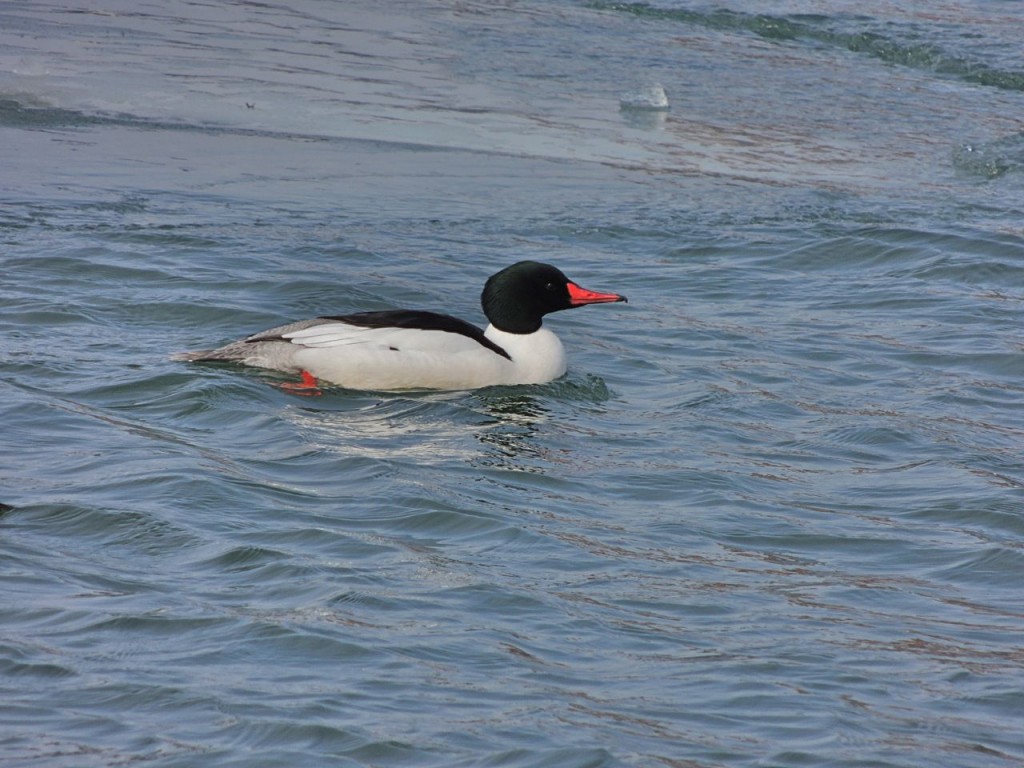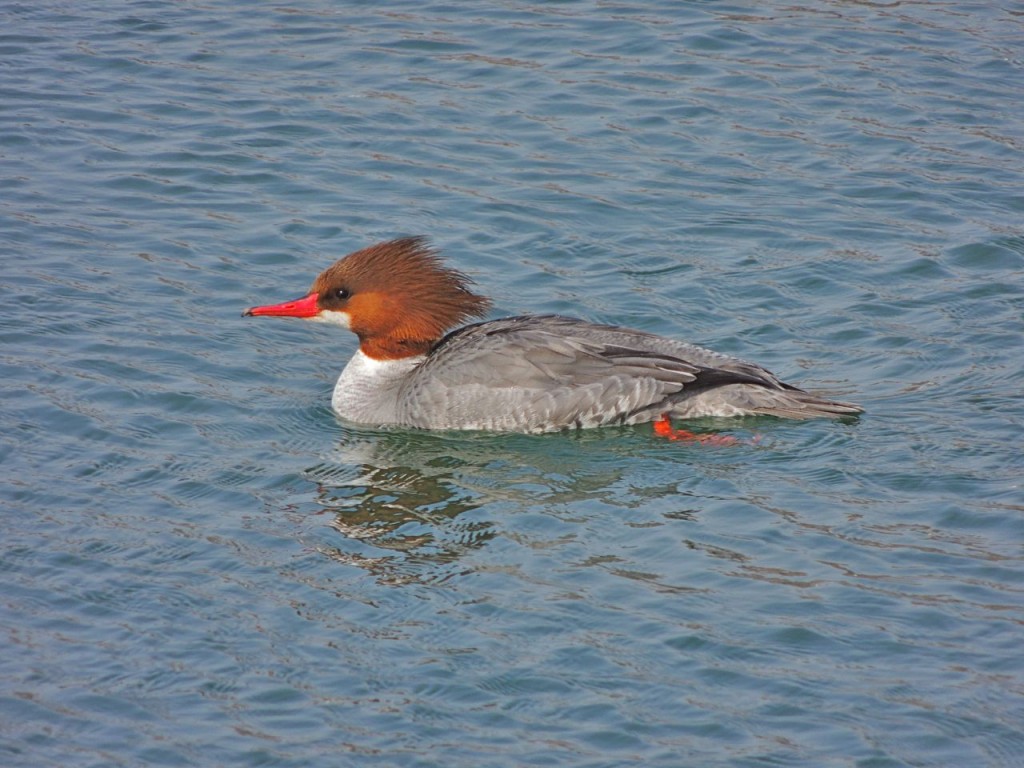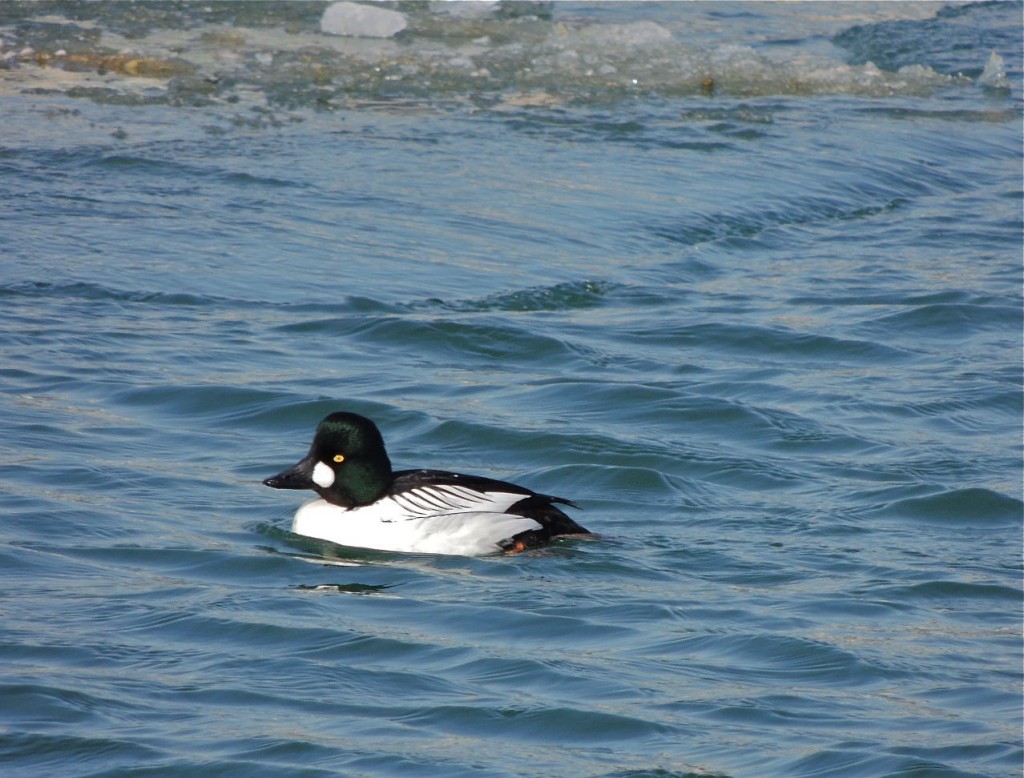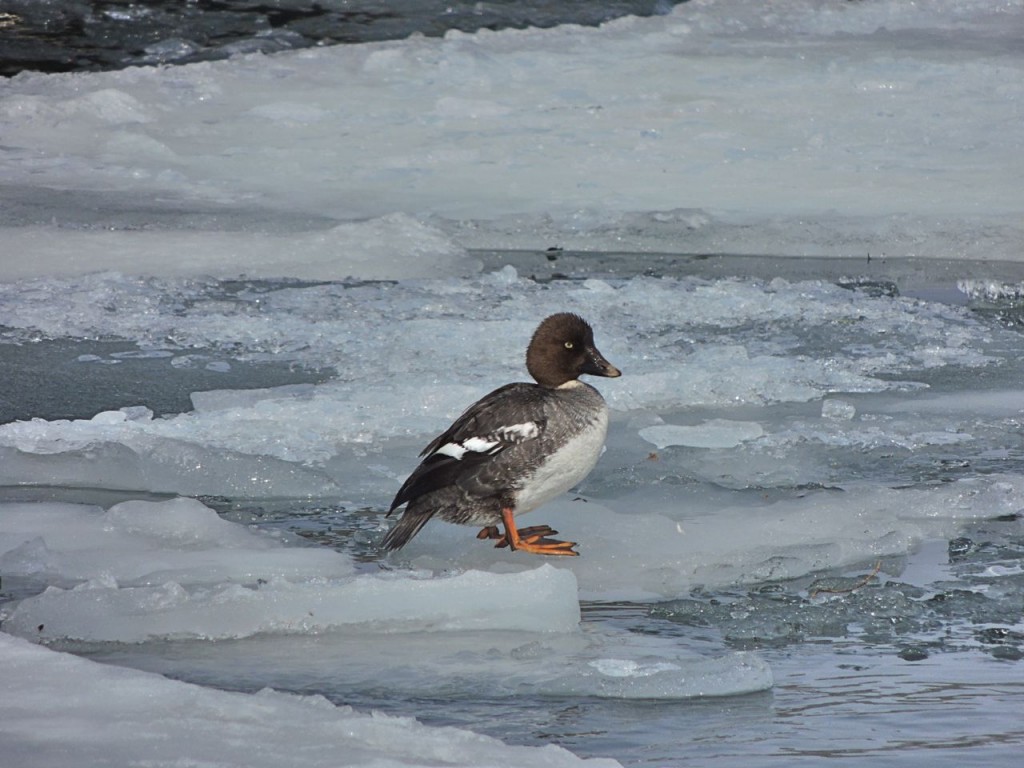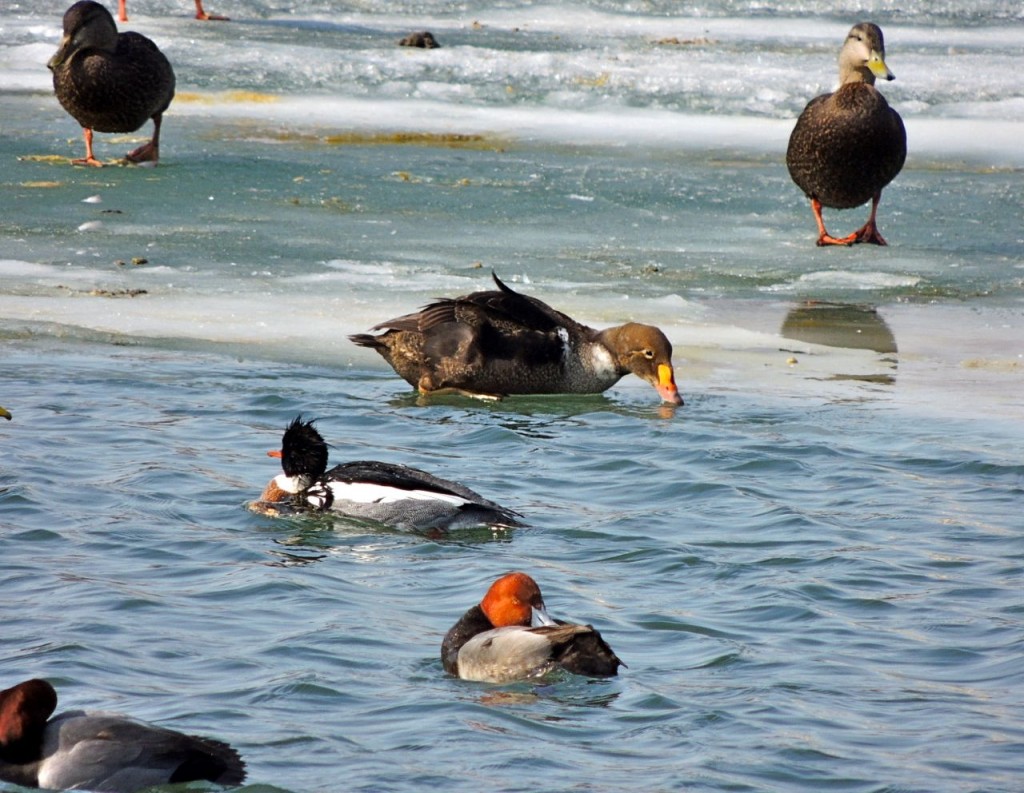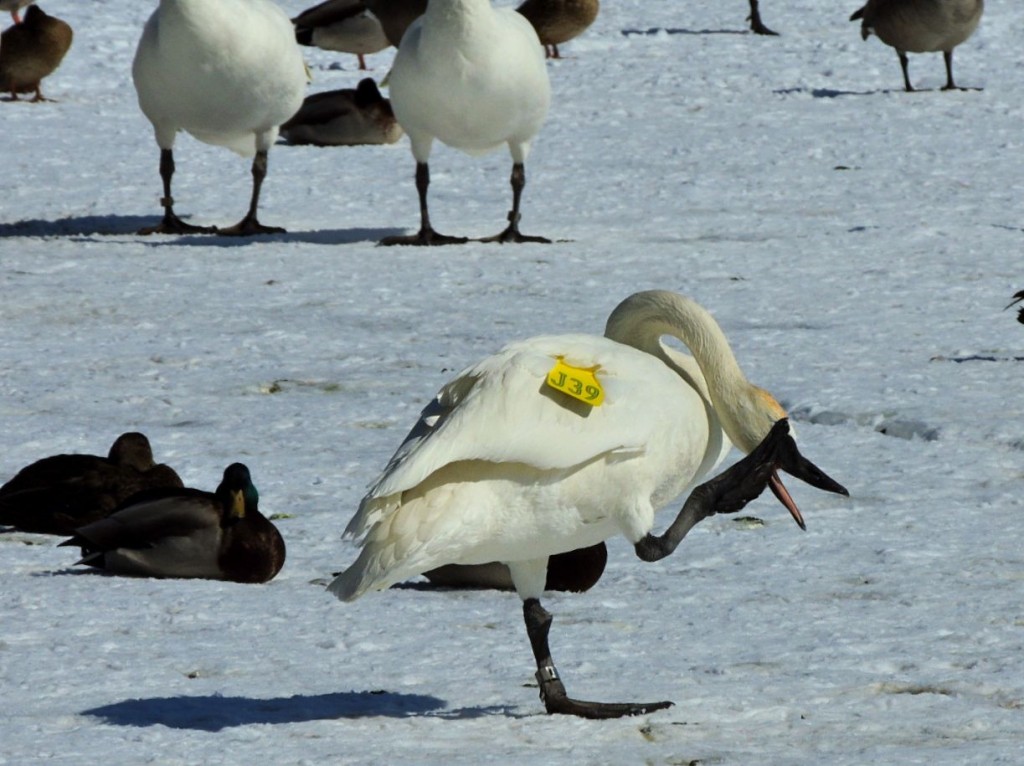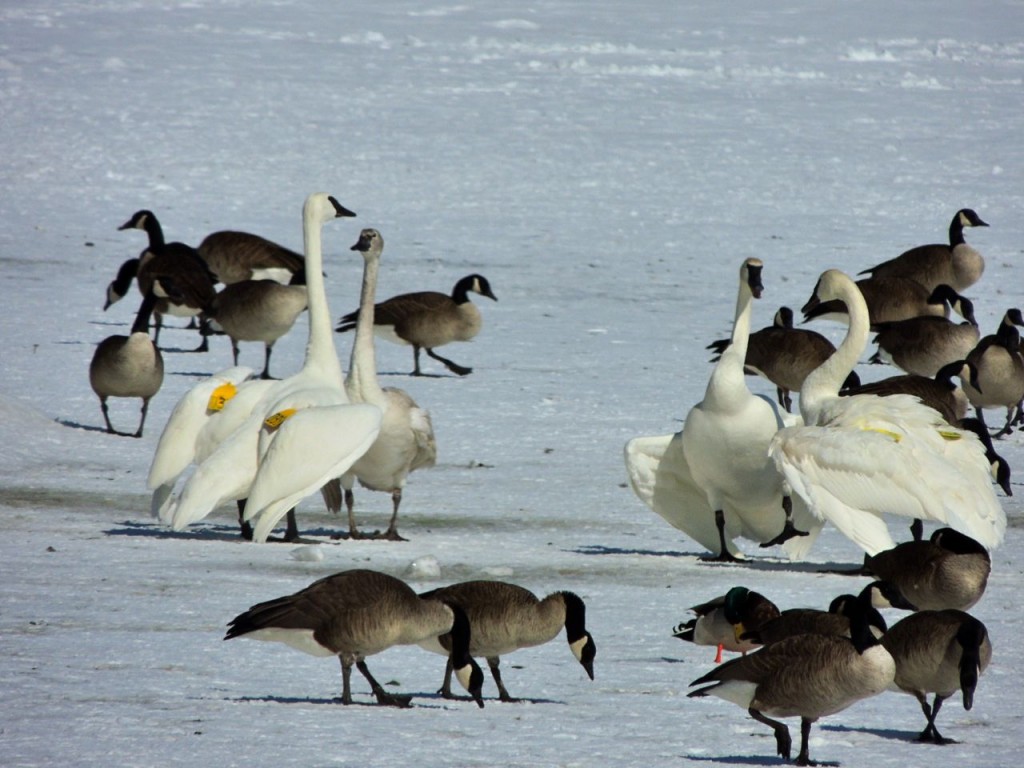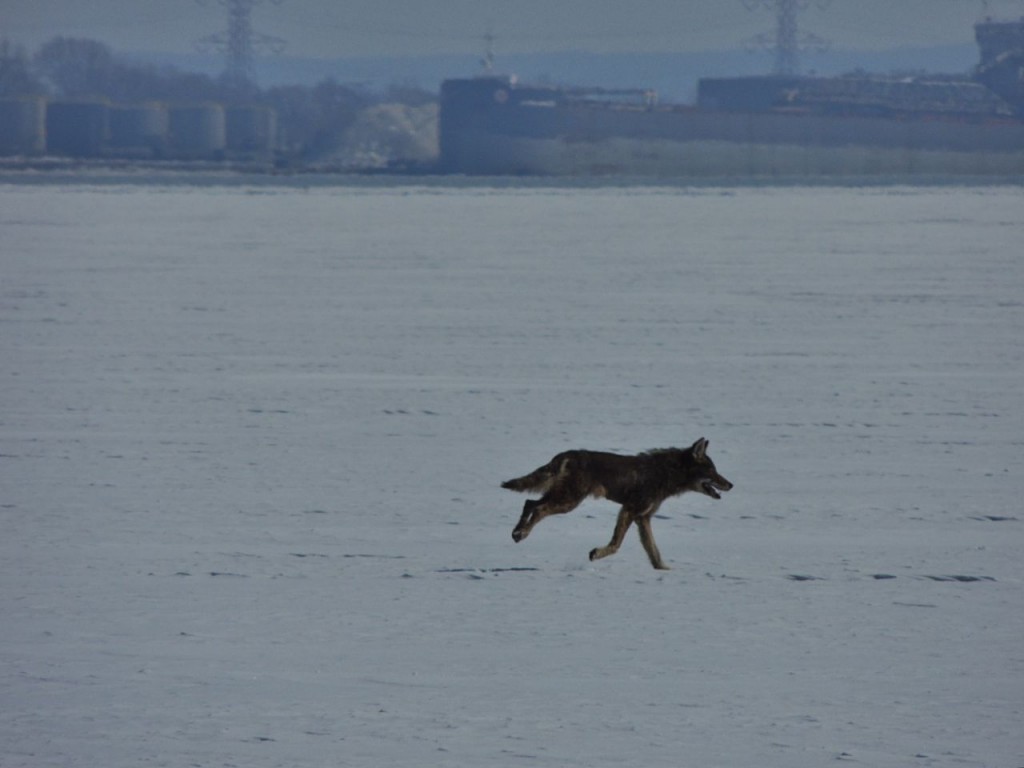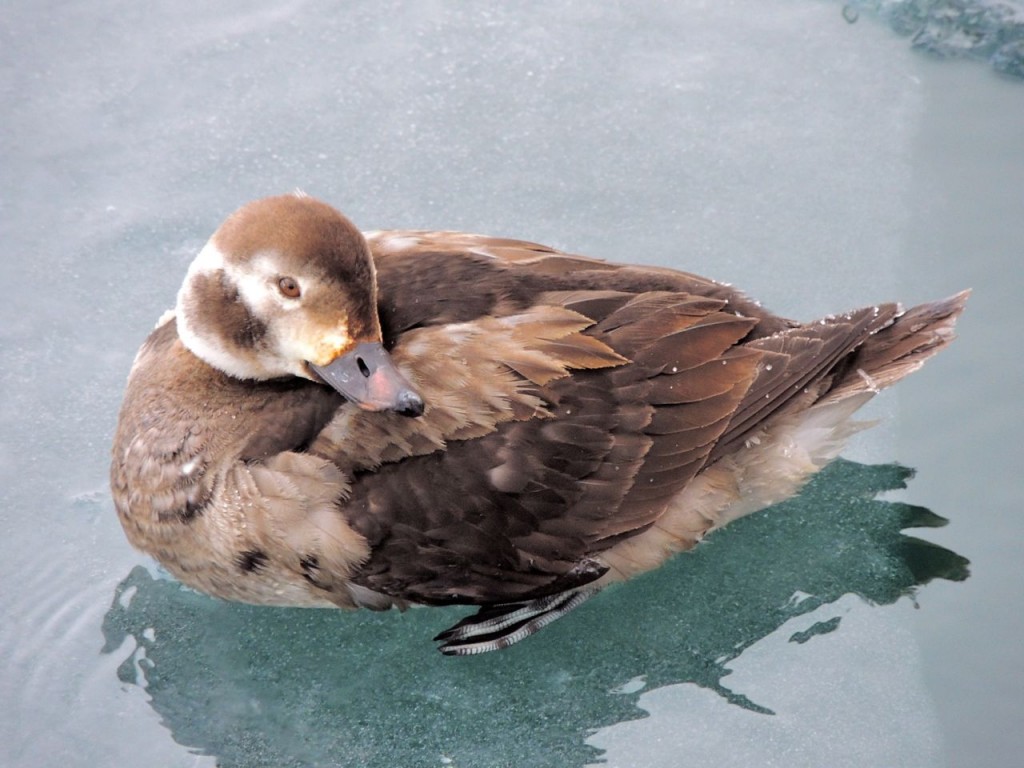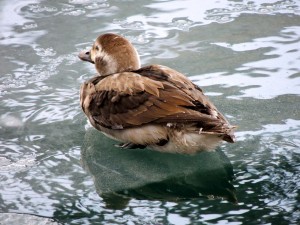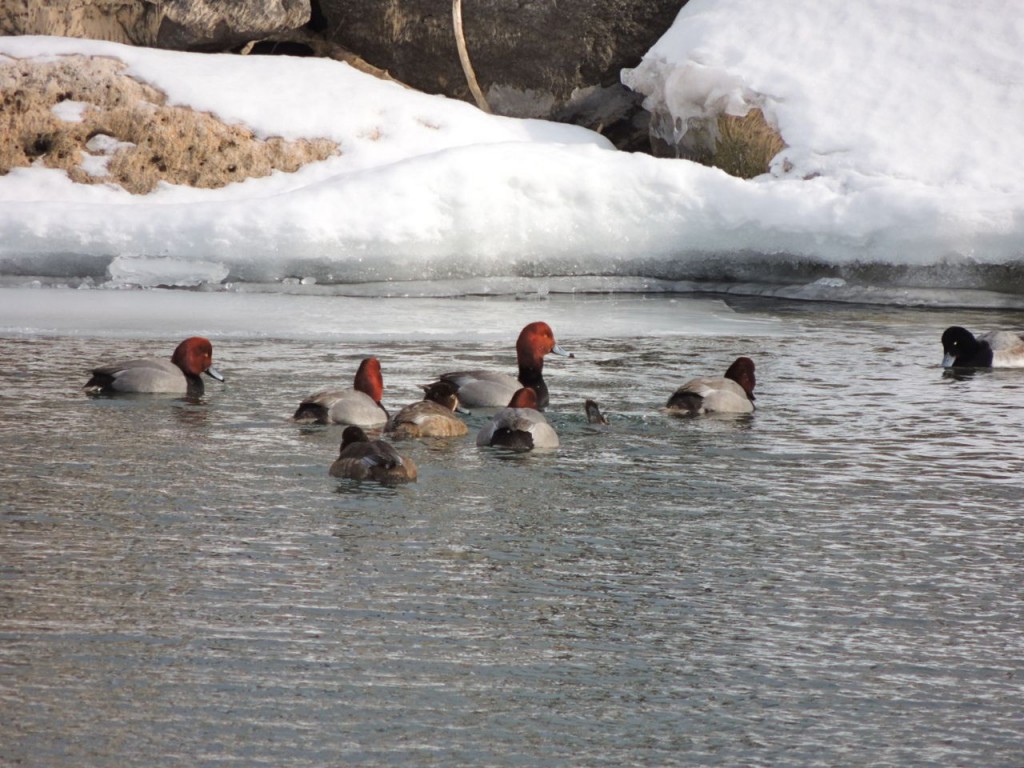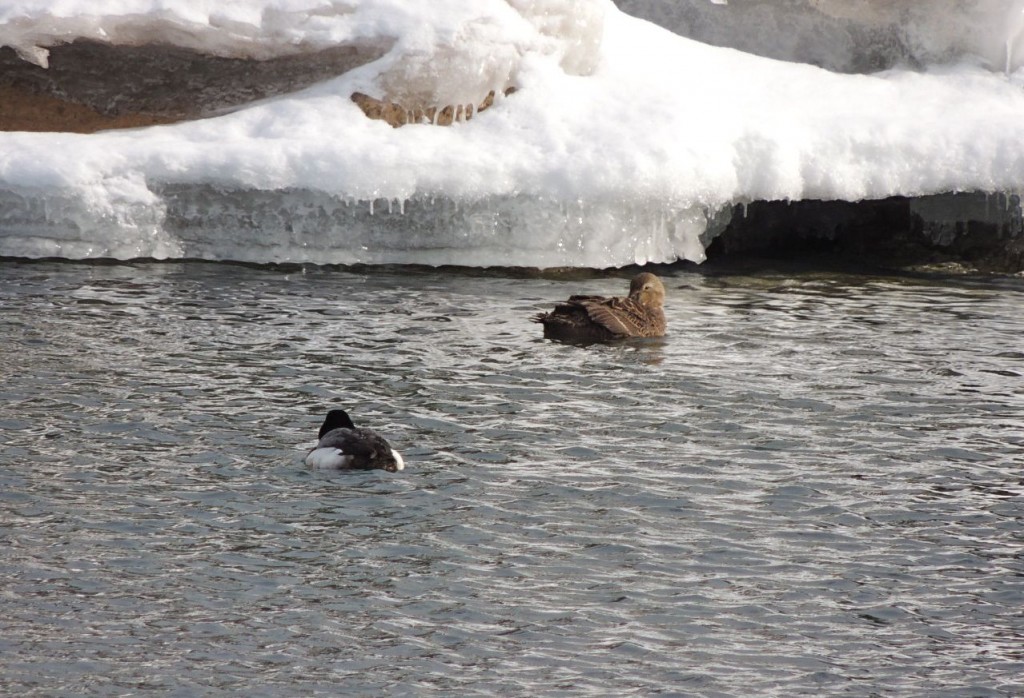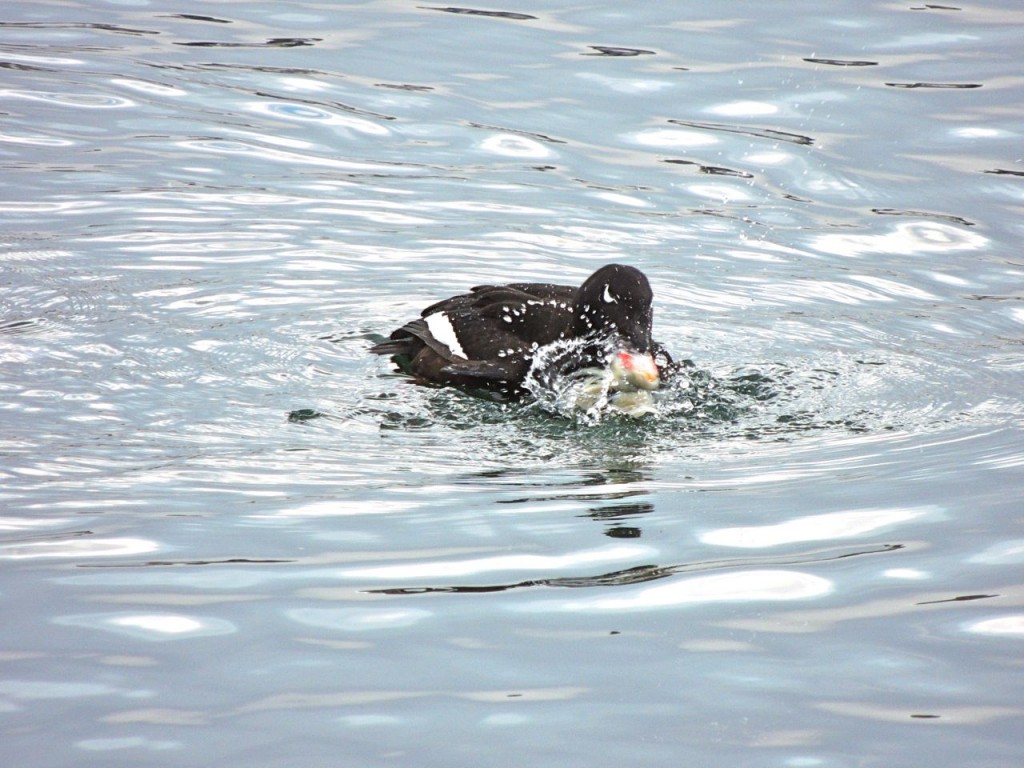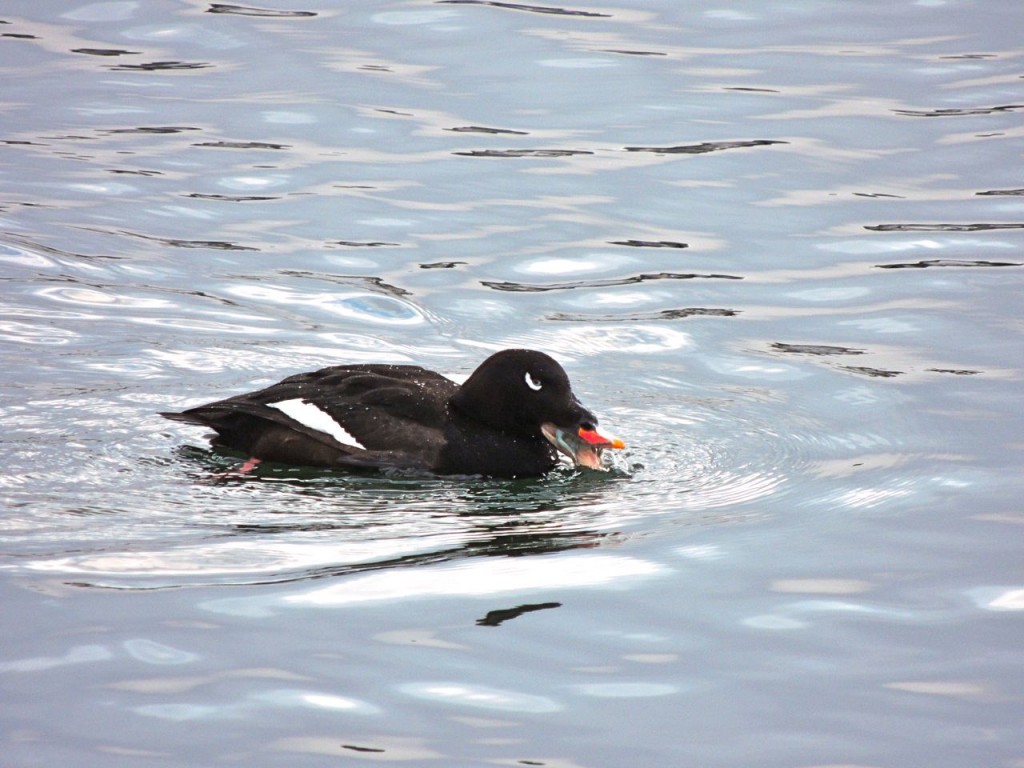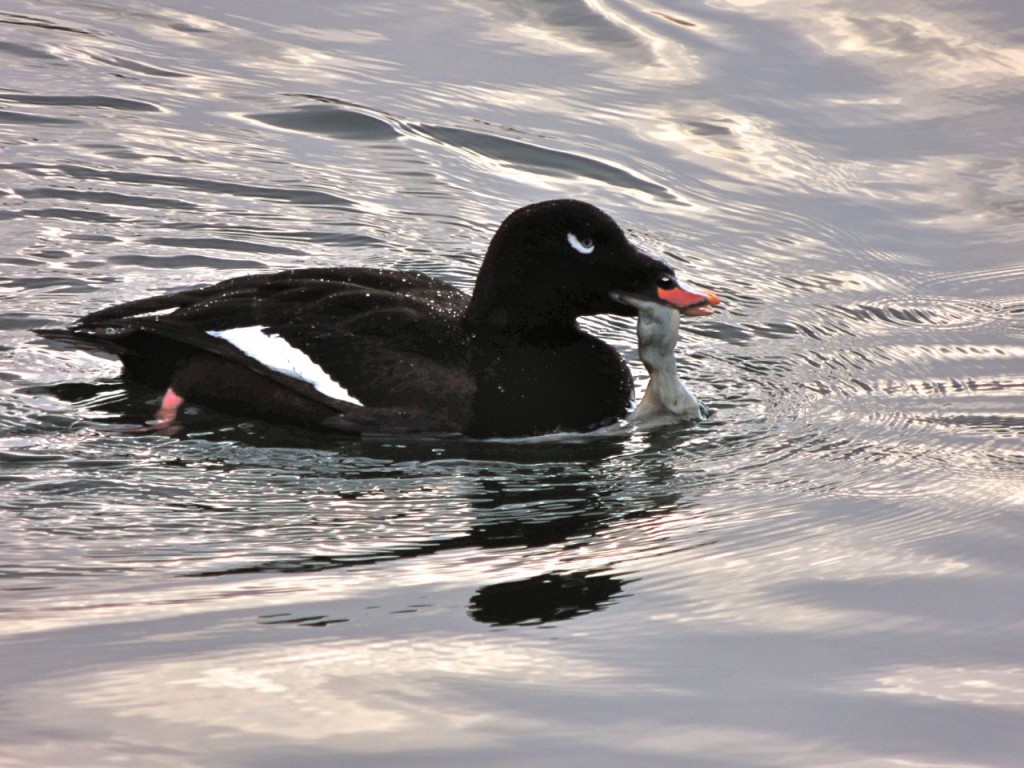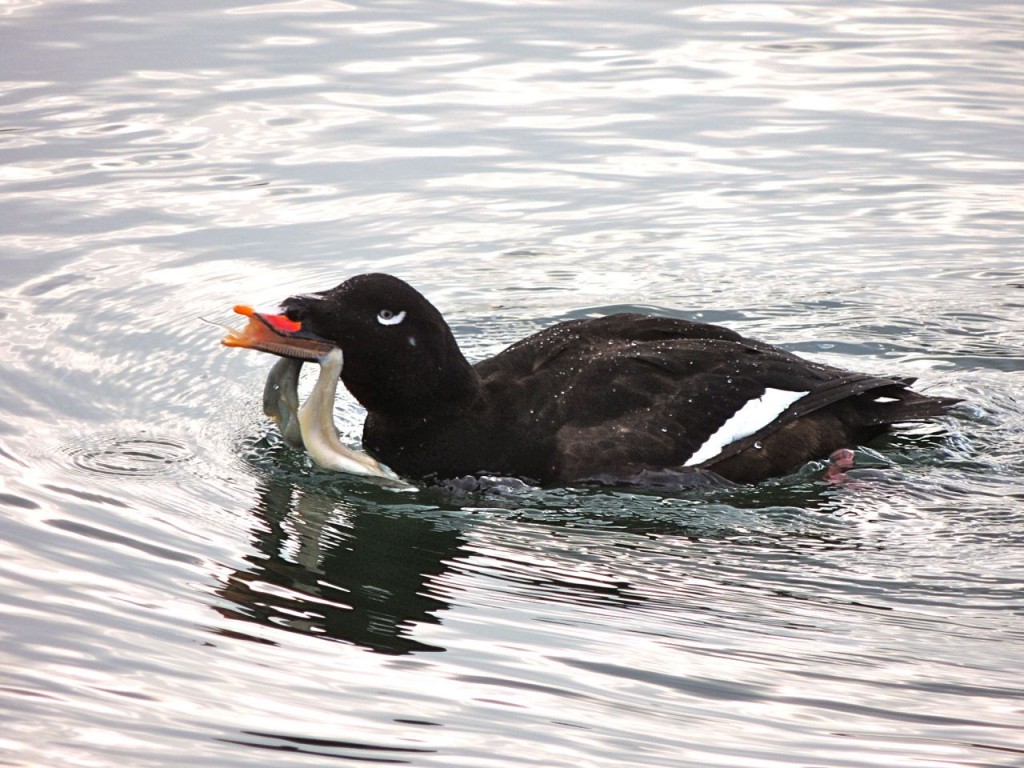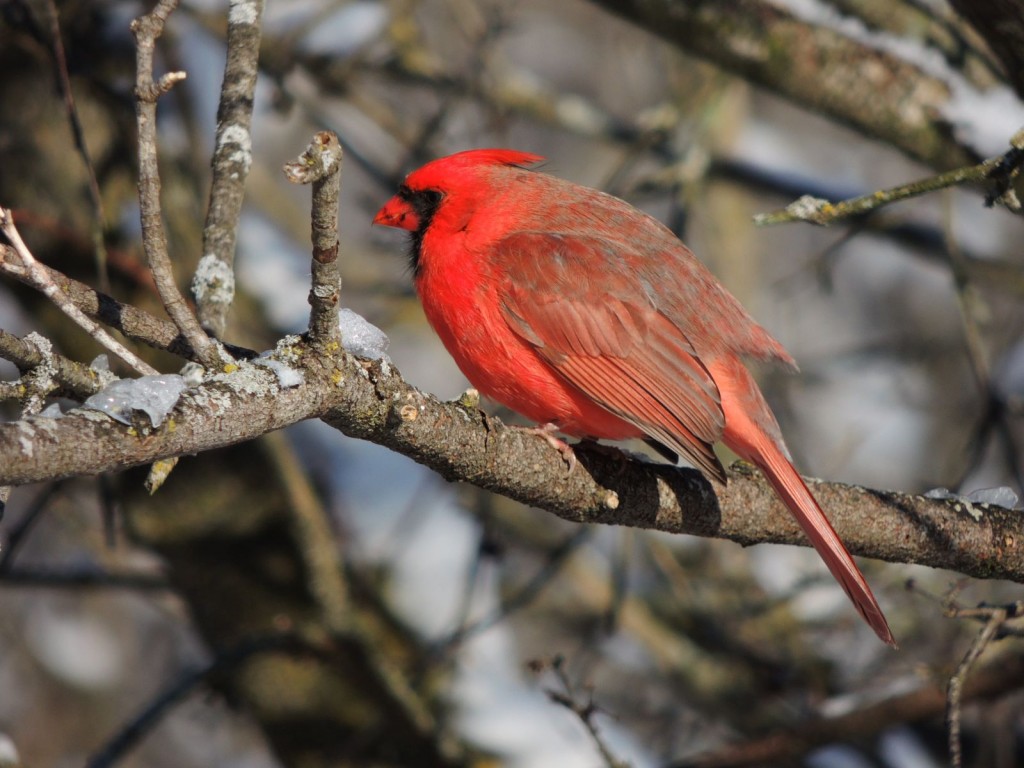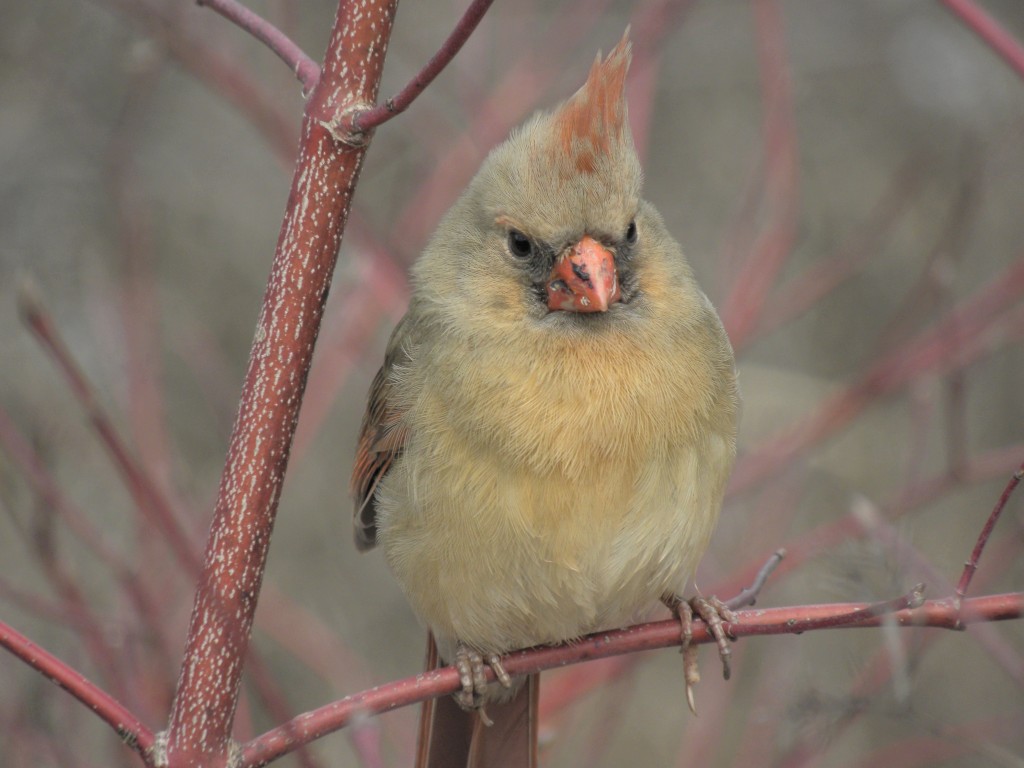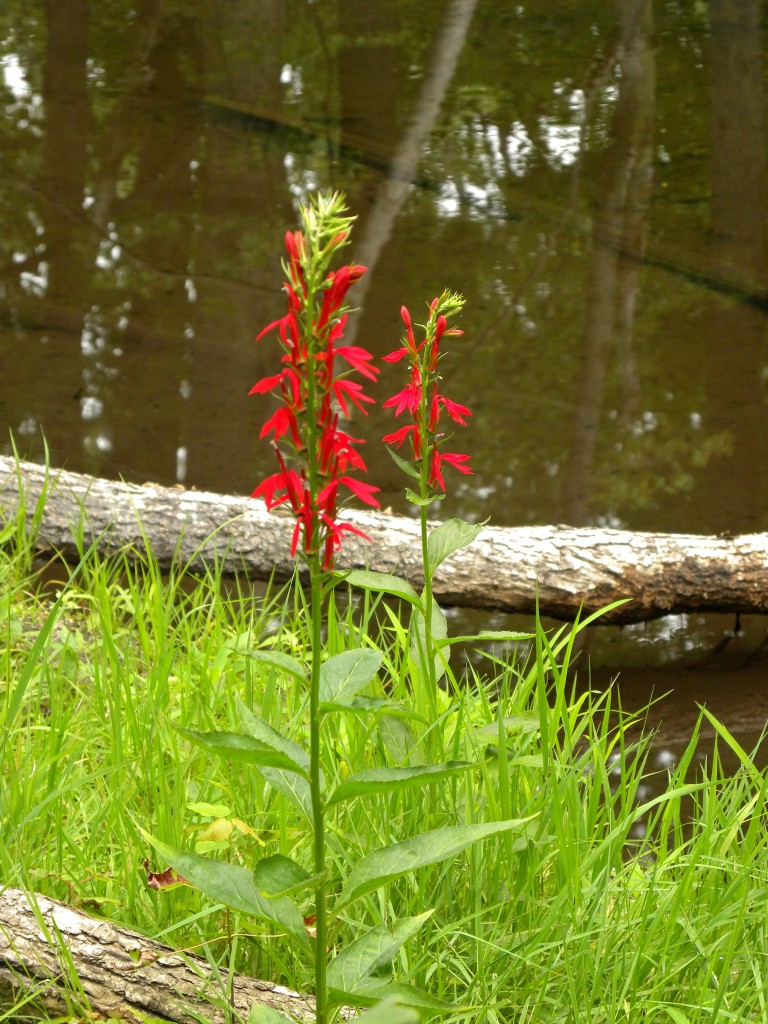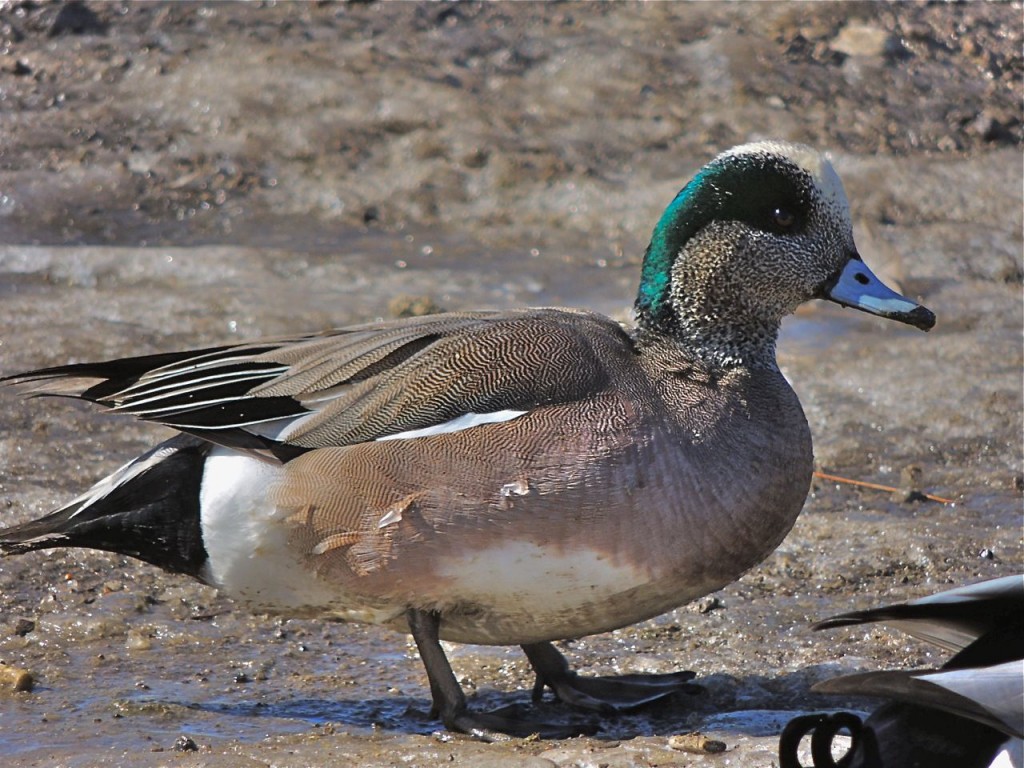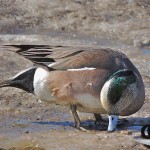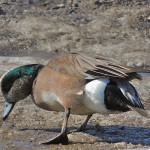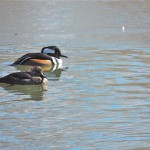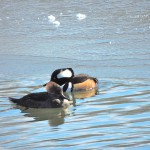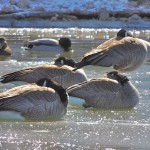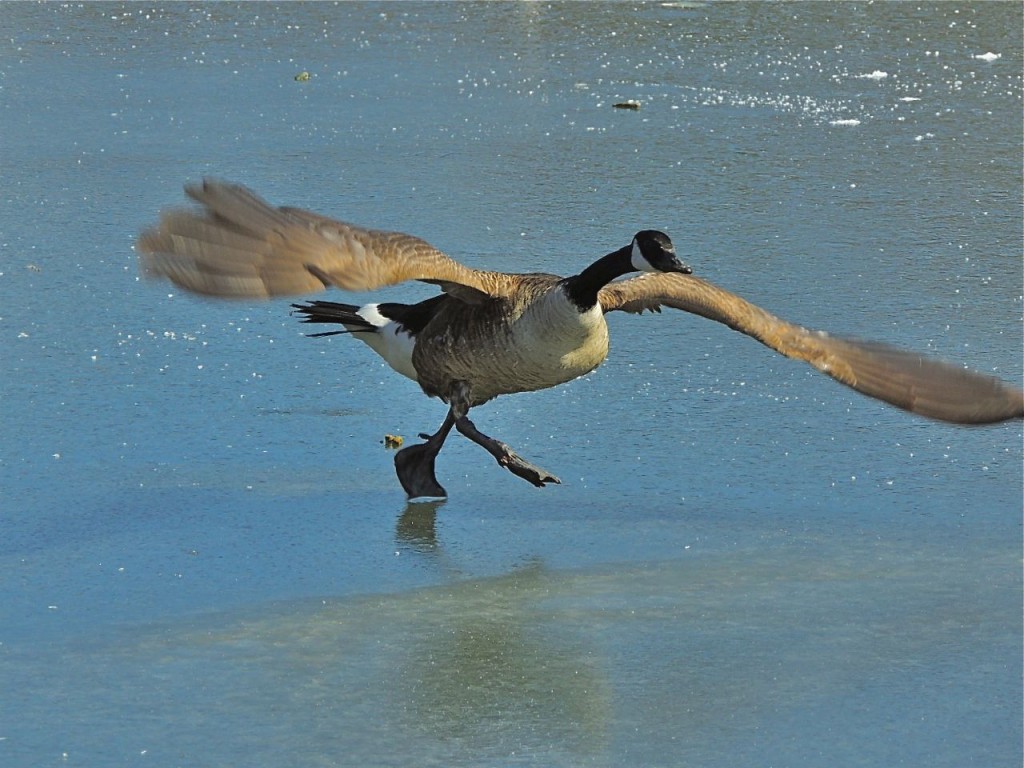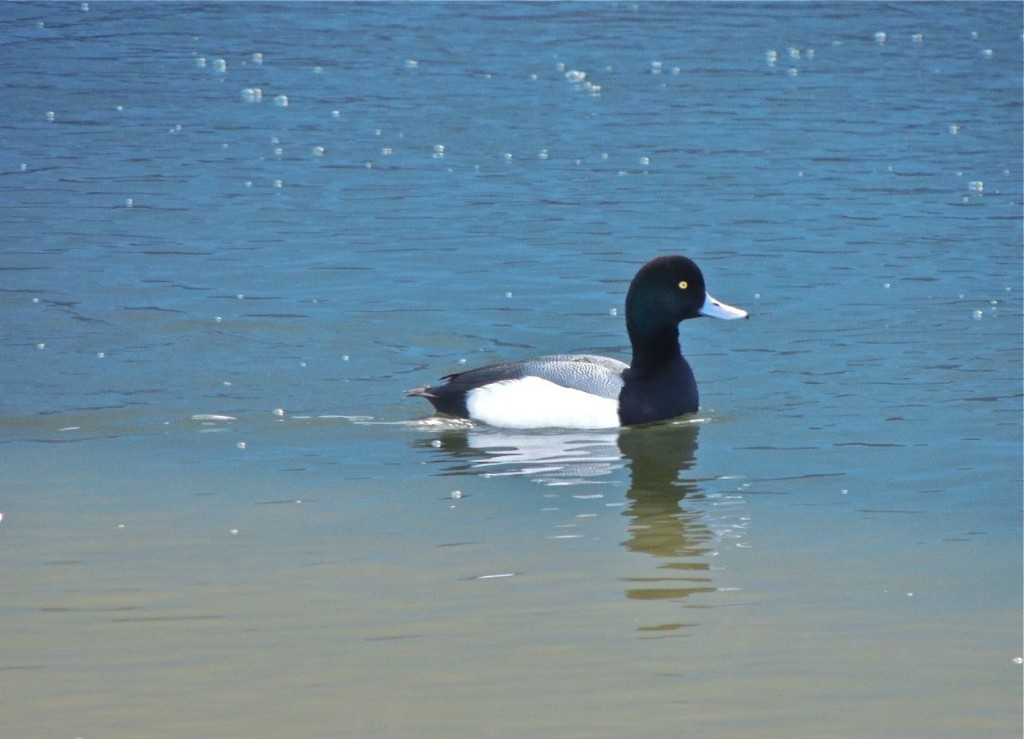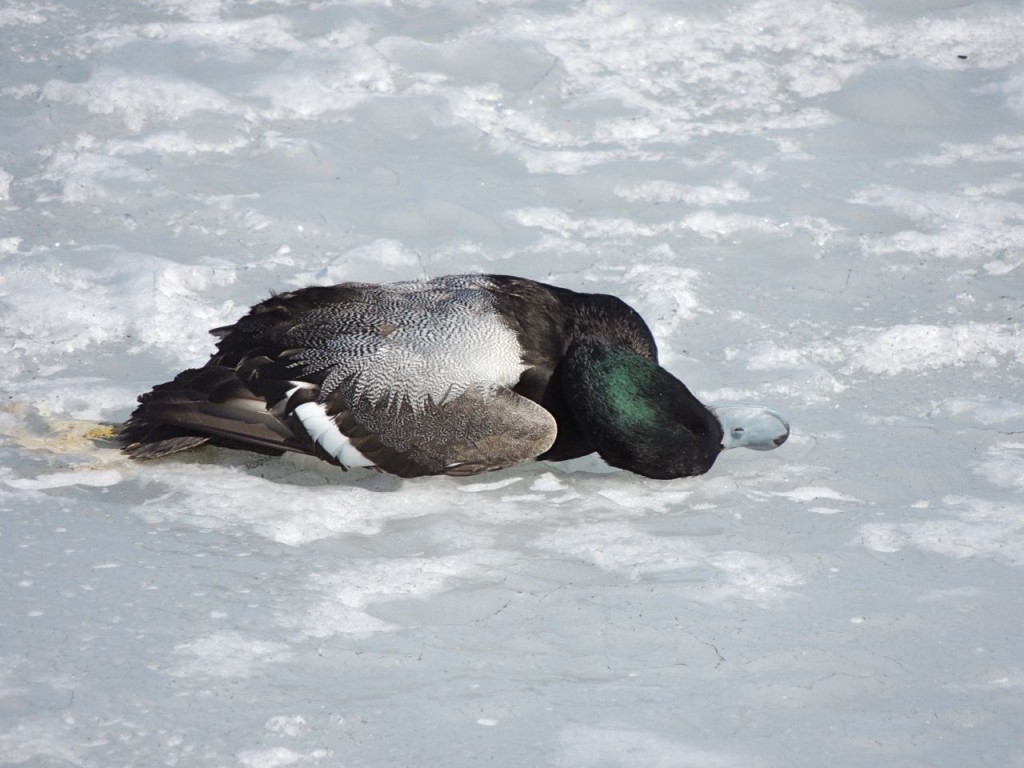10 March 2014. Bronte Harbour, Ontario. Five days ago, my birds of the day were King Eiders, but I also mentioned a White-winged Scoter and its battle to subdue a mollusk. Today I returned to that same marina to see if I could get a better idea of what the scoter and other ducks are feeding on. I’m almost certain that they’re plucking Zebra Mussels from the lake bottom. Zebra Mussels are a Eurasian mollusk that was introduced into the Great Lakes from the bilge water of a visiting ship, or so the conventional wisdom goes. Over the past three decades or so, having few natural enemies, the mussels have spread throughout the Great Lakes and become a serious nuisance. On the bright side, their abundance is a rich and easy source of food for several Arctic diving duck species that now stay to over-winter here rather than press on to the Atlantic, as they did formerly.
The harbour, where all of last week’s reported events took place and to where I returned today, allows for marvelous close-up views of waterfowl of every stripe. A pier and extensive seawalls extend out into Lake Ontario and curl around to embrace a small craft marina. Under current ice conditions the majority of the marina is totally iced over, but the furthest point of the pier intrudes into an area of open, yet sheltered, water and it is here that hundreds of ducks, geese and swans have gathered all within a hundred feet or so of a safe viewpoint.
For quite a while I watched several White-winged Scoters diving for food, hoping to see one repeat the food control performance of five days ago. While none of them managed to spear anything quite as succulent looking, several brought large mollusks to the surface and worked hard juggling them in their large bills to break them open. Frequently the food-item would slip from the bird’s hold but a quick and easy dive got it back on board. This whole nutcracker-without-the-hands-to-control-it process made a good case for the development of forelimbs, hands and opposable thumbs in particular; but how then would it fly?
If a picture is worth a thousand words, I’ll save myself hours of typing and leave it to the following to illustrate how ducks in general were my birds of the day. Click on any picture to enlarge it.
